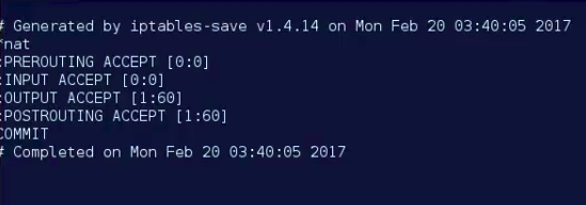iptables-restore command in Linux with examples
Last Updated :
05 Mar, 2019
iptables-restore and ip6tables-restore commands are used to restore IP and IPv6 Tables from data being specified on the STDIN or in the file. Use I/O redirection provided by default from your shell to read from a file or specify the file as an argument.
Syntax:
iptables-restore [-chntv] [-M modprobe] [-T name] [file]
ip6tables-restore [-chntv] [-M modprobe] [-T name] [file]
Options:
- -c, –counters : This option restores the values of all packet and byte counters.
- -h, –help : This option prints a short option summary.
- -n, –noflush : This option doesn’t flush the previous contents of the table. If it is not specified, both the commands flush (delete) all previous contents of the respective table.
- -t, –test : This option only parses and construct the ruleset, but do not commit it.
- -v, –verbose : This option prints additional debug info during ruleset processing.
- -M, –modprobe modprobe_program : This option Specifies the path to the modprobe program. By default, the iptables-restore will going to inspect /proc/sys/kernel/modprobe to determine the executable’s path.
- -T, –table name : This option restores only the named table even if the input stream contains other ones.
Examples:
1) Create a new iptable which helps in restoring.

2) It will create a new file named iptableslist.txt. To see the contents of file run the following command on the terminal:

3) The content of the file is:

4) Now the last step is to restore from that file we just created. We can simply restore iptables using the following command.

Like Article
Suggest improvement
Share your thoughts in the comments
Please Login to comment...